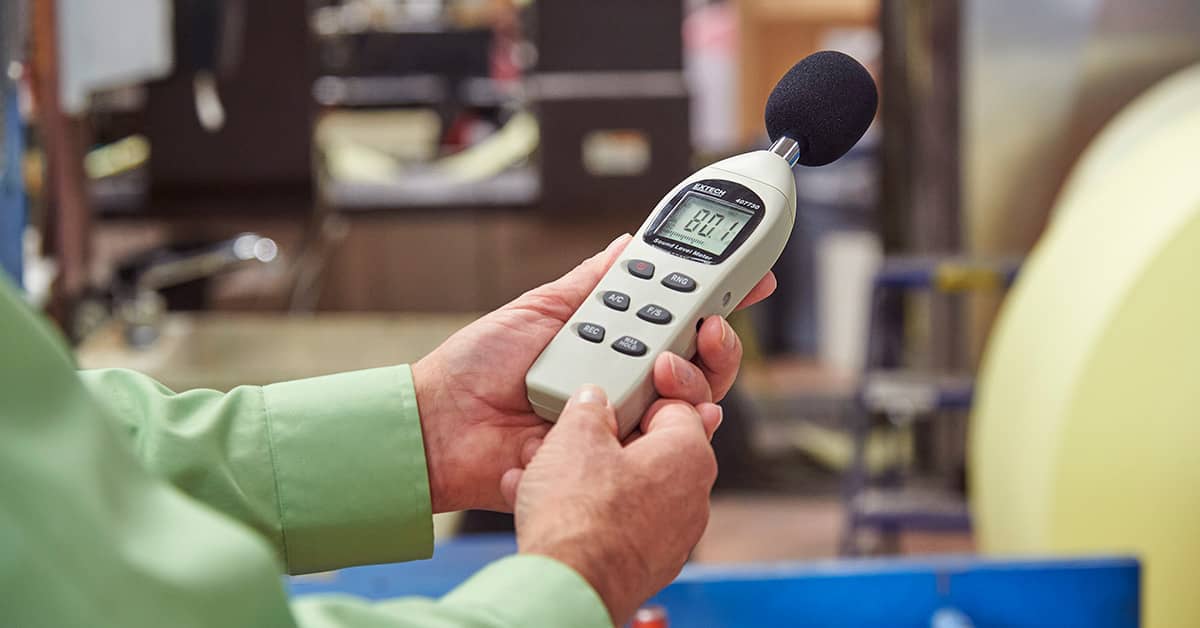How loud is too loud?
Date Posted: 05/05/2025

Every year thousands of workers suffer from preventable hearing loss due to high workplace noise levels. This can occur in a variety of industries, including manufacturing, construction sites, concert venues, and airports.
Noise can cause temporary or permanent hearing loss. Temporary hearing loss results from short-term exposures to noise, with normal hearing returning after a period of rest. Prolonged exposure to high noise levels causes permanent hearing damage and can cause other harmful health effects, such as increased blood pressure, headaches, and fatigue from the strain of talking and listening over the noise.
Noise monitoring
When information indicates that any worker's exposure may equal or exceed an 8-hour time-weighted average of 85 decibels (dB), you need to develop and implement a monitoring program. As a general indicator, noise levels could be over 85 dB if workers need to shout to speak to someone three feet away!
If monitoring is required, an exposure measurement must:
- Include all continuous, intermittent, and impulsive noise;
- Be taken during a typical work situation; and
- Be repeated whenever changes in processes, production, or controls increase noise exposure.
To begin a noise evaluation, consider the:
- Noise level in each work area;
- Equipment and processes that are generating noise (e.g., motors, gears, and belts);
- Which workers/job functions are exposed to noise; and
- Length of noise exposure.
Once you’ve identified the sources and conducted monitoring, see if your sound levels exceed those listed in Table G-16 of 29 CFR 1910.95, OSHA’s Occupational Noise Exposure standard. If so, your next step — an important one — is to consider ways to reduce the noise or redirect it away from workers.
Reducing workplace noise exposure
You must first try to reduce hazardous noise levels through the use of engineering or administrative controls. “Engineering controls” involve physically changing your work environment to prevent or eliminate worker exposure to a hazard. Examples include:
- Installing a muffler on a machine,
- Making sure moving parts on machinery are properly lubricated, and
- Buying quieter equipment.
If engineering controls aren’t feasible or don’t eliminate or reduce noise to an acceptable level, you may turn to “administrative controls.” Such controls involve managing workers’ activities and safe practices to reduce their noise exposure. Examples include:
- Using job rotation from louder areas to quieter ones throughout the shift,
- Scheduling multiple noisy tasks at different times from each other, and
- Operating a noisy machine only during a shift when fewer people are exposed.
If engineering or administrative controls aren’t feasible or don’t reduce noise exposures to a safe level, you must implement a hearing conservation program.
Hearing conservation program
When it’s not possible to reduce the noise to levels in Table G-16, you must provide hearing protection for affected workers and implement an effective hearing conservation program as outlined in 1910.95. This program covers monitoring, noise exposure computation, audiometric testing, hearing protection, training, worker access to information, and recordkeeping.
How Safety Management Suite Can Help
Keeping track of hearing conservation program elements can be a challenge. The Audits feature in J. J. Keller® SAFETY MANAGEMENT SUITE provides numerous ready-to-use checklists to help determine what’s required. Performing self-audits allows you to identify and eliminate hazards and helps ensure you’re in compliance.
E-mail Newsletter
Sign up to receive the weekly EHS Insider email newsletter for safety articles, news headlines, regulatory alerts, industry events, webcasts, and more.